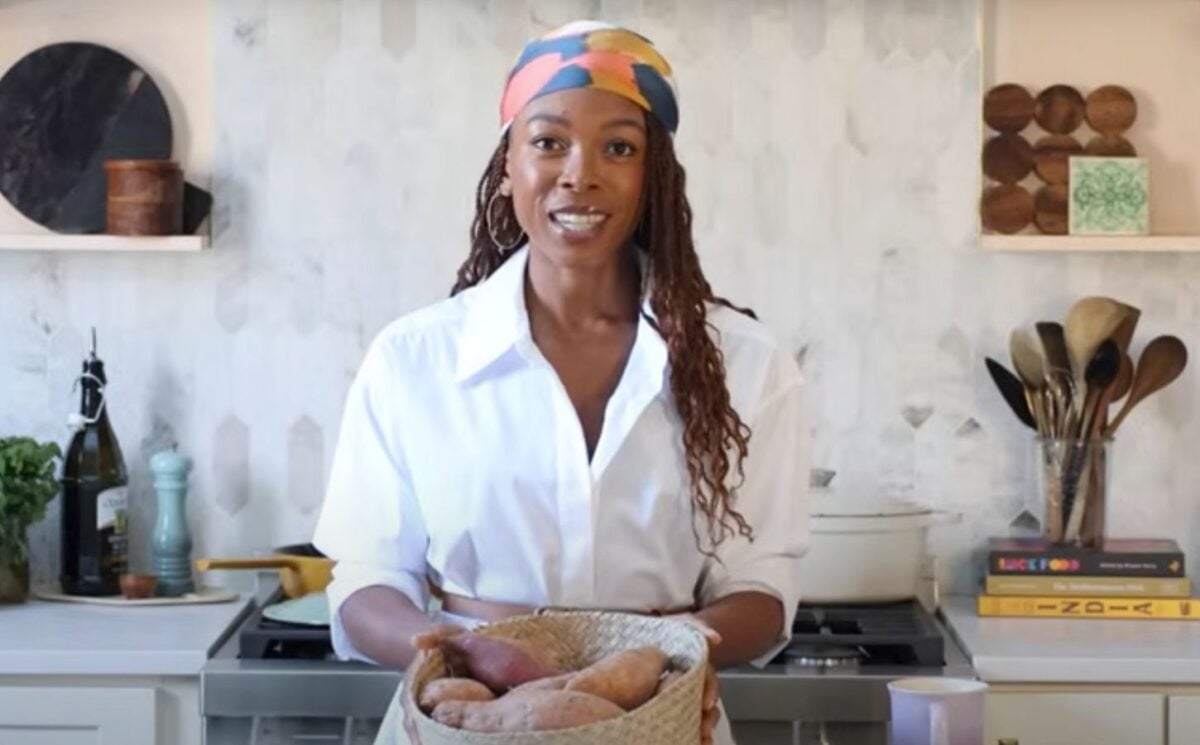Mastering the art of homemade bread is impossible without lots of practice or the right recipe . However, if you want to make your own sourdough loaves from scratch, you can speed up the process by using just two ingredients to craft a “cheat’s” loaf. A true sourdough is made from a starter of flour and water left to ferment for several days, during which natural yeasts are absorbed from the air.
However, the process can be condensed down to 24 hours. Thought up by the culinary experts at Sainsbury’s Magazine, this nifty bread recipe is perfect for first-time bakers. The chef’s note: “In this easy, quicker method, a little yeast speeds the process while the 24-hour fermentation means the bread still has a real flavour plus a chewy crumb (with the characteristic irregular holes) and crisp crust.

” Like all fresh bread, it’s best consumed within two to three days. However, it also freezes well for long-term storage. Ingredients 600g strong white bread flour, plus extra for dusting Three-quarter tsp fast-action dried yeast (from a 7g sachet) Take a medium-sized mixing bowl and add 225g of the flour.
Pour in the yeast and mix well with your hand. Slowly drip 225ml of room-temperature water into the bowl, mixing it into the flour as you go to make a thick, very sticky dough. Cover the bowl with a damp tea towel and leave it on your kitchen worktop for 24 hours.
Refill the towel from time to time during this period. The mixture will bubble up, expand by three or four times its original volume, and fall back. After 24 hours, uncover the bowl, stir in another 175ml of water, and then transfer the mixture into a larger bowl.
Add 175g of the remaining flour plus two teaspoons of salt into the bowl and work it with your hands. When mixed, add enough of the remaining 200g of flour to make a soft but not sticky dough. Lightly dust a clean worktop with flour, turn the dough out of the bowl onto the floured area and knead thoroughly by hand for 10 minutes.
You can also knead the dough using a stand mixer and the dough hook for five minutes on a low speed. The kneaded dough should feel very elastic and pliable. Return the kneaded dough to the bowl, cover tightly with clingfilm, and leave to rise on the worktop until it has doubled in size.
Depending on the room temperature and the liveliness of the dough, this takes two to three hours. To test the dough, lightly flour your knuckle and punch down the dough to deflate it. Turn the dough onto a worktop dusted with flour, and gently shape the dough into a neat ball.
Line a baking tray with baking paper and place the dough in the centre. Slip the tray into a large plastic bag, slightly inflate the bag so the plastic doesn't touch the dough, and close the ends. This is the final proving stage for the dough, and should take about one hour and 30 minutes.
Towards the end of the rising time, preheat the oven to 220C, fan 200C fan, gas 7, and put an empty roasting tin into the bottom of the oven to heat up. Take the dough from the bag and quickly slash the top of the loaf with a sharp knife, then place it on an oven rack. Quickly pour a jug of water or ice cubes into the hot roasting tin and close the oven door.
The steam produced will give a good crisp crust. Allow the bread to bake undisturbed for 35 minutes. The loaf should be golden and sound hollow when tapped underneath.
Leave the finished sourdough loaf to cool on a wire rack before slicing..
Food

Stop buying sourdough bread when you can make it with this 2-ingredient recipe

Making sourdough from scratch can be complicated and time-consuming, but neither is true of this simplified recipe.














